Everything you should know about foldable phones, from history to controversy
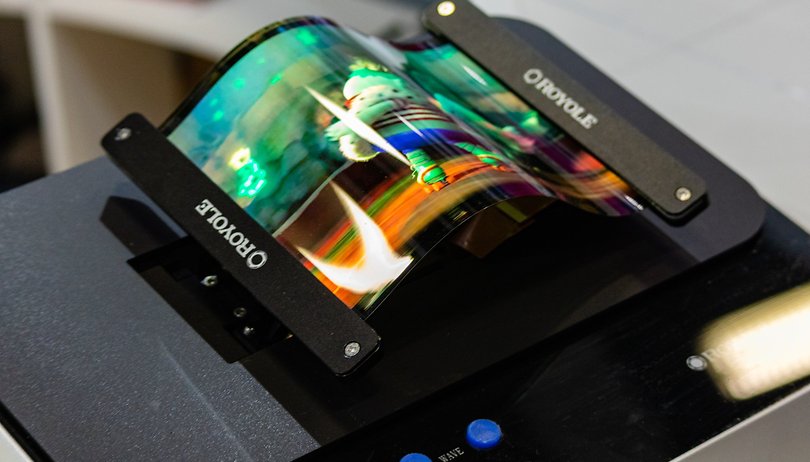

Foldable smartphones are currently the biggest bet among manufacturers. From January of this year it seems that everyone has presented, or is working on, a device with this technology. The appeal to consumers seems clear: who wouldn't like a smartphone that suddenly becomes a tablet?
But do you know where they came from and when the technologies that made folding devices possible were created? Which manufacturers have already announced products in this category, and what are the main differences between them? What's more, does this concept have a future or will it be more of a passing fad?
Older than you may think
The modern flexible OLED panels used in foldables are the result of a combination of a series of research and discoveries dating back to the 1960s.
Look at the keyboard on your computer. Do you see the green "little light" that indicates that the Caps Lock key is active? That's an LED (Light Emitting Diode), a type of electronic component that when subjected to electric current produces light. Unlike an incandescent lamp, LEDs are compact, have no filament and generate no heat, making them ideal for a wide variety of applications.
The first LEDs capable of producing visible light in yellow were created in 1962 by Nick Holonyak Jr., an engineer at General Electric. Over time, red and green LEDs have become popular as indicators and alphanumeric display components in electronic equipment.
But one thing was still missing: blue LEDs, which were developed by the Japanese inventor Shuji Nakamura, an employee of the Nichia Corporation, in 1993.
With the three primary colors available, it was only a matter of time before they were combined into a single component, the white LED, also announced by Nichia in 1996.

Meanwhile, other scientists were working on the miniaturization of the technology, which happened with the discovery of OLEDS (Organic Light Emitting Diode). With this technology, light is produced by a thin "film" of organic material placed between two conductors. The first practical devices were created by Ching W. Tang and Steven Van Slyke, engineers at Kodak (yes, the famous photographic company) in 1987.
Since then, evolution has been rapid. Manufacturing methods were being improved, the efficiency (and luminosity) of the panels was increasing, and in 2001 Sanyo already demonstrated, during CEATEC Japan 2001, 2.2-inch panels for mobile phones, capable of producing 260,000 colors. At the same event, Sony attracted crowds with a 13-inch panel with 800x600 pixel resolution and 1.4 mm thick, designed for use on TVs and monitors.

Flexible OLEDs came about with the change in the substrate used in the production of the panels. Instead of glass, the manufacturers started using plastic. During CES 2009, I personally saw a demonstration of a small 2.5" panel with 160 x 120 pixel resolution, attached to two rods that constantly flexed it, at the Sony stand.
In 2013, Samsung introduced a line of flexible OLED panels that it called YOUM. During the presentation was shown a prototype of a device, the size of a smartphone, whose screen curved towards the sides. Sound familiar? Yes, it was the birth of the screen with "curved edges" that came to market with the Galaxy Note Edge in 2014, and later migrated to the Galaxy S line.
But although flexible, these panels were applied on a rigid surface for protection. Truly foldable panels require much more durability, as they will be flexed numerous times over their lifetime. It took another six years for the technology to become mature enough for the first folding products to reach the market.
What's already on the market
Royole FlexPai
The first foldable smartphone was introduced by the then-unknown Royole Corporation at CES 2019 in Las Vegas. Named Royole FlexPai, the device has a 7.8-inch screen with 1920 x 1440 pixel resolution that folds in half, resulting in something that when closed looks like a smartphone with screens on both front and back.
Although the folding aspect is impressive, the product as a whole was not well received. Partly due to hardware problems, such as an overly rigid hinge that gave the feeling that it would break or the large space between the screens when closed, but also due to software problems, such as slow transition between "bent" and "open" mode.
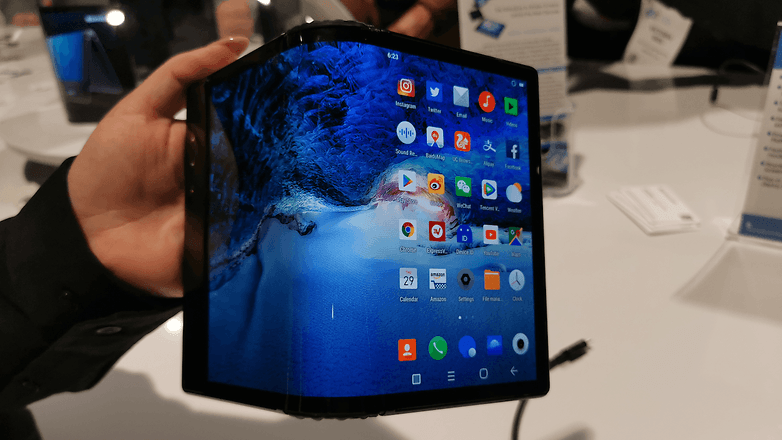
You can still buy a Flex Pai on the Royole website for a modest $1,588 for the model with 128 GB of internal memory. The device runs the Android operating system, and is based on the Qualcomm Snapdragon 855 processor.
Galaxy Fold
The second foldable announced was Samsung's Galaxy Fold, presented in February this year along with the Galaxy S10 family. In contrast to the FlexPai, which has the screen on the outside of the device, the Galaxy Fold has the 7.3-inch screen (with a resolution of 1536 x 2152 pixels) on the inside and opens like a book. On the outside, there is a second 4.6" screen, which allows the use of the device when closed.
Initial press impressions of the Galaxy Fold were good, with several journalists praising the quality of the hardware and the new usage modes possible thanks to the foldable screen. But suddenly the tide turned when the screens of various devices began to fail. As a result, Samsung recalled all the handsets that were in the hands of the press and postponed the product launch worldwide.
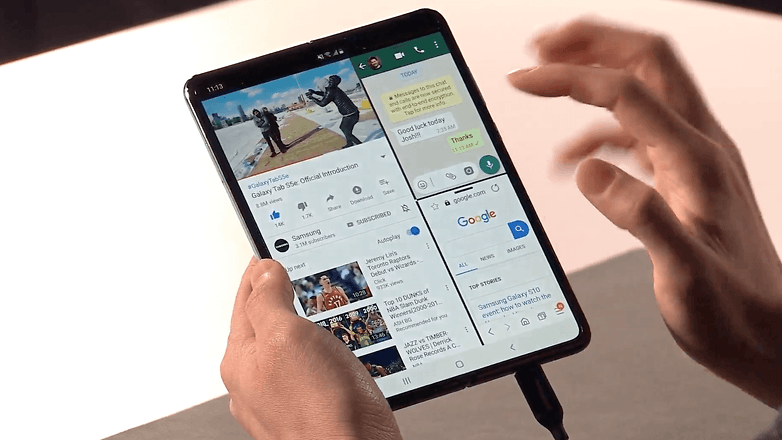
Samsung has not yet announced a new release date for the Galaxy Fold. When it reaches the market, the device will cost $1,980 in the United States.
Huawei Mate X
Huawei presented its first foldable, Mate X, during the Mobile World Congress 2019 in Barcelona. With a suggested price of $2,500, the device also uses an external screen, this time with 8 inches and resolution of 2480 x 2200 pixels. When closed it turns into a smartphone with two screens, a 6.6-inch front and a 6.4-inch rear.
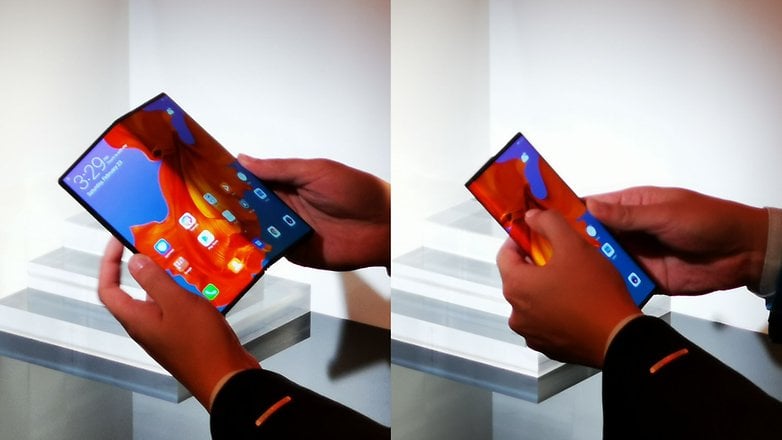
The design is more elegant than that of the Galaxy Fold. When closed it is thinner, the screen is larger both open and closed and a single set of three cameras serves as both rear camera and camera for selfies, depending on how you hold the device.
The Mate X has a 4,500 mAh battery with fast charge, capable of going from 0 to 85% in just 30 minutes, and is compatible with 5G networks. Huawei hasn't set a launch date yet.
OPPO
Little is known about OPPO's product, which was presented through the company's social networks also during Mobile World Congress 2019. The device has a very similar design to the Huawei product, with an external screen and a rear "bar" on the right edge of the screen that houses cameras and sensors.
I don't want to launch a $2,000 product. - Brian Shen, vice president of OPPO.

OPPO has not disclosed any more technical details, price, posting date, or even the product name. In other words, for the time being it seems that the company just wanted to make its presence felt among the advertisements made during the MWC. Brian Shen, vice president of the company, says he prefers to "wait" to see how the competitors are doing in the market, and that "doesn't intend to launch a $2,000 device". Let's wait and see.
Xiaomi
Another product wrapped in mystery. What is known is that it has a unique design, with an external screen and two vertical folds, demonstrated in videos published by executives on the company's social networks. The expectation is that it will reach the market in the middle of this year, and rumors suggest that it will cost "about $999", half the price of a Galaxy Fold. If it's true, it'll be quite a feat.
Motorola
You can put this in the category of "products so leaked that they are almost confirmed". Dan Dery, Motorola's Global Vice President of Products, confirmed in February in an interview with Engadget that the company is working on a flexible smartphone. And since then many other details have emerged, thanks to informants with connections in the industry.
The device, which for now is known unofficially as "RAZR 2019", would be a reissue of the design of the Motorola RAZR V3, launched in 2004 and one of the most successful devices in Motorola's history.
Instead of a "smartphone that turns into a tablet," it seems Motorola's idea is to use a wide screen with horizontal folding, which would allow a device with a large 6.2" screen that folds in half and takes up much less space in the pocket when closed.
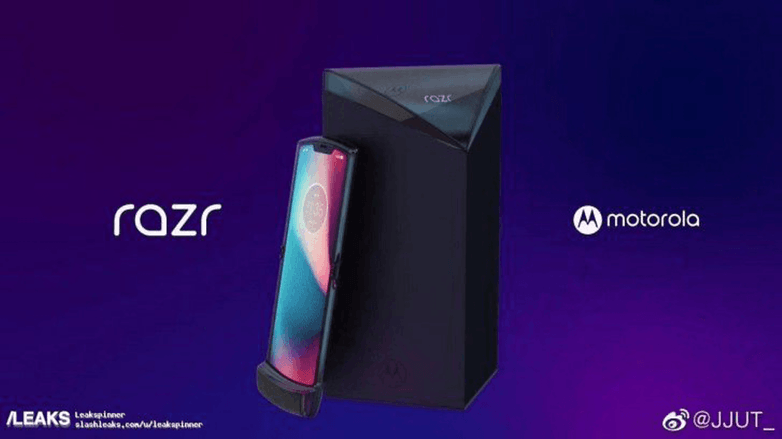
The device would be based on a Qualcomm Snapdragon 710 processor (an intermediate), with 6 or 4 GB of RAM and 128 or 64 GB of internal memory. There is no defined launch date, but it is estimated that the product will reach the stores costing around $1,500.
Mario Queiroz, Google's Vice President of Product Management, confirmed in an interview with CNET that the company is researching folding devices. "Sure we are prototyping this technology. And we've been doing that for some time now. But I don't think there's a clear usage scenario," he said.
But according to Queiroz, the company expects there to be something more than a "big screen on a small device" to motivate consumers.
"I think you need to be more innovative than that. The usage scenario has to be something that makes you say 'Hey, I really need to have this'. Nowadays you don't need a foldable, it's more something that 'it's nice to have'".
It is worth remembering that the next version of Android, the "Q", will have official support for folding devices. As a result, many more manufacturers should venture into this market segment.
What does the future hold?
Certainly, the hardware of foldables will evolve very quickly. I hope to see already in the second generation (which should arrive at the beginning of next year) products that are much thinner, lighter, more robust and with better battery life. I understand the appeal of a "smartphone that turns into a tablet" (compact in the pocket, great for watching movies and playing games), but I agree with Google's Mario Queiroz: something more is needed to stimulate the consumer.
And I care about the software. Unlike Apple, the Android tablet market is virtually non-existent: apart from Samsung at the top of the line, the rest is a multitude of very low-quality products fighting for the lowest price.
Software optimized for large screens will be crucial for the success of foldables
That's why there are few developers who really optimize their apps to work on large screens, something that is crucial for foldables in the format imagined by Royole, Samsung, Huawei or Xiaomi. Motorola, with its "smartphone that folds in half" concept, seems to be the least affected by this problem. Maybe this is the way forward in the short term.
The fact is that I don't see an explosion of creativity like this among manufacturers since the iPhone came on the market in 2007. It's about time, the smartphone market was getting a little dull.
What do you expect from foldable smartphones? Share your opinion on the comments!







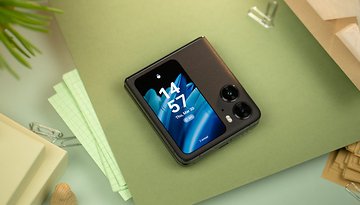
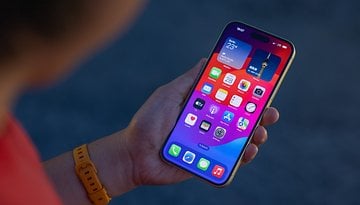
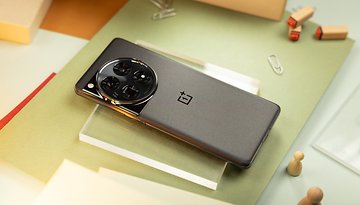
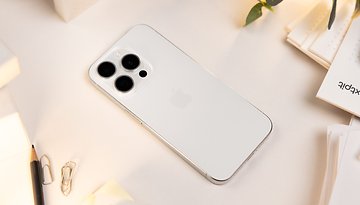
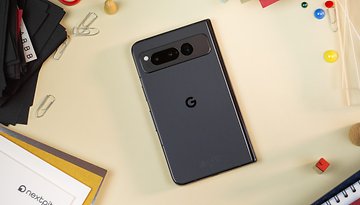


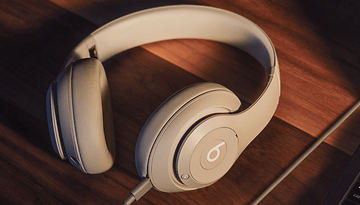


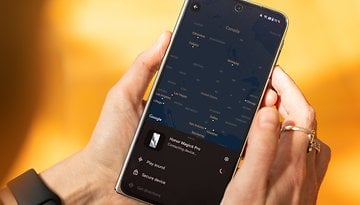


I think Huawei is ahead in the game.